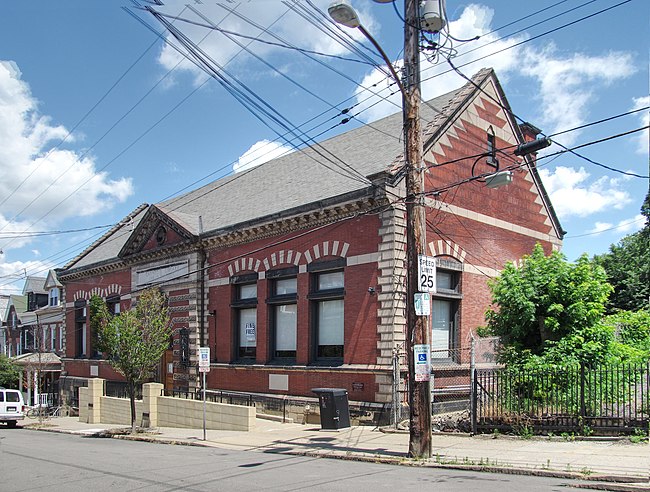
This fine little Renaissance palace, built in 1896, was the first of Carnegie’s branch libraries, and thus arguably the vanguard of the whole idea of branch libraries. It was also the first public library with open stacks, where patrons would just walk to the shelf and pick up the book by themselves. In other libraries—including much of the main Carnegie in Oakland until a few years ago—the patron would ask for the book at the desk, and a librarian would run back to the mysterious stacks and fetch it.
Like all the original libraries in the Carnegie system, this was designed by Alden & Harlow.


3 responses to “Carnegie Library, Lawrenceville Branch”
Was the innovation of open stacks done for the purpose of reducing staffing and making these libraries affordable for smaller communities to maintain?
Interesting question. Without long research—without even five minutes of research—our best answer is probably. Five branch libraries were part of Andrew Carnegie’s first grant to Pittsburgh, and from the beginning they had open stacks. On the other hand, the Homestead Library, a much grander institution that was built at about the same time as this one and opened half a year later, had closed stacks and clerks to fetch books. That library (and concert hall and workingmen’s athletic club) was one of Carnegie’s few endowed libraries: he usually insisted that the local governments would have to maintain the libraries he gave, but the Homestead Library was meant to be a grand palace of enlightenment for the steelworkers who depended on Carnegie, and perhaps an atonement for the 1892 Homestead labor war.
So we see strong indications that the reason for open stacks was their cheapness.
It’s worth noting, though, that smaller communities didn’t maintain the branch libraries. From the beginning they were part of a citywide system—a system that did not include, and still does not include, the Carnegie Library of Homestead. The cheapness of open stacks probably made Carnegie’s vision of a city-maintained library in every neighborhood possible.
[…] little library was the second of Carnegie’s branch libraries, after the one in Lawrenceville; like all the original branch libraries, it was designed by Alden & […]